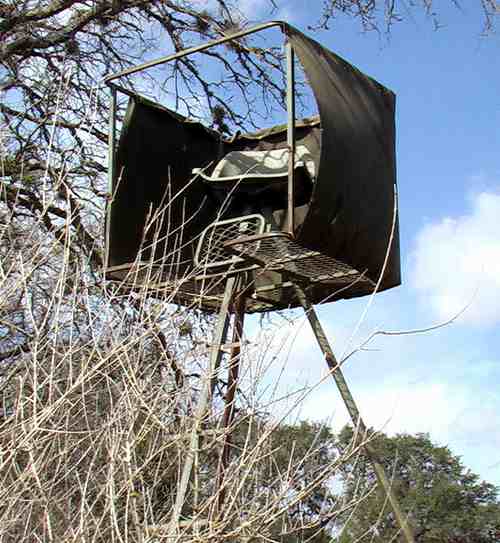Hunting blinds are a common and effective way that a hunter can shield himself from the animal he is after and minimize the chances of being detected.
Often, a deer hunter will use climbing equipment to perch himself in a tree and use that as cover, but there are several grounded blinds available for purchase that are easy to pack in, set up, and move around while in the field. Some require the hunter to lie down while others allow for sitting and kneeling/standing.
I have been using the Harter’s Ground Blind for several years now with great success. Here, we’ll discuss different types of blinds with examples for you to check out before making a purchase.
Hunting Blinds: What to know and what to look for
-
Deer hunting blinds
- Portable- Portable blinds are the most common, and work best for most hunters as they can be packed in and out, and moved from spot to spot quickly. They range in size from small to large enough to fit two to three hunters and have shooting holes built-in. They set up like a tent with stakes and a mesh lining, typically weighing between ten and twenty pounds. A good blind will provide 360-degree shooting capabilities and vision while maintaining disguise from all angles.
- Permanent- When thinking of permanent blinds, picture a treehouse that a father might build for his kids. Some are made of wood and built on stilts, giving the hunter an extended range of sight, while others sit on the ground. Permanent hunting blinds will require power tools to assemble, but are durable and will last many years. Permanent blinds are only doable if you own the hunting property, or have an arrangement worked out with the landowner, as they cannot be packed in and out and require an immense amount of labor to put together. Here is a video on setting up permanent hunting blinds.
While they are more comfortable and can be modified to your specific setup and preferences, it’s quite an investment. Some require the purchase of an elevated hunting tower to serve as the base of the blind pod. If you are looking into buying a permanent hunting blind for your property.
-
Tree stand blinds
These are often not much more than a skirt to go around a hunting chair or platform already built into the tree. The benefit of these hunting blinds is that they provide an elevated viewing and shooting area. You will need additional gear to climb the tree and to set up a seating area. Be sure you have fastened the skirt on securely before setting up shop, especially if it’s windy outside.
-
Duck hunting blinds
Duck hunting blinds are similar to deer hunting blinds but designed for waterside landscapes. Often they are designed to look like the tall reeds and plant life that waterfowl thrive in, and feature wider shooting holes that often run the length of the tent’s long side. Around fifteen pounds in weight, give or take, duck hunting blinds are quick to set up and break down.
However, you can build your own duck blind by building a pit deep into the ground using boxes that are built to resemble a 30-gallon oil drum that has been shaped into the landscape. Be sure to put a wooden cover on it so that it won’t fill up with rain when not in use. Again, this is only effective if you are always hunting the same spot.
Conclusion
Personally, I refuse to hunt without a blind, mostly because in addition to camouflage they also provide shelter. You can bring a cooler of beer, food, and other necessities for the hunt and keep it hidden away, and if it rains or is very windy you’ll have protection from the elements.
I don’t own land, so my hunting is done on public land where I have to truck in my blind each time, so I try to keep the process simple by using a tent-like blind with a hunting chair and always bring a blanket. While I’ve always been partial to Harter’s, Ameristep makes many quality products that are affordable and easy to set up.
Have ideas or product recommendations? Share here in the comments and let’s get a discussion going, and don’t forget to blast this article out on social media if you’ve enjoyed it.
